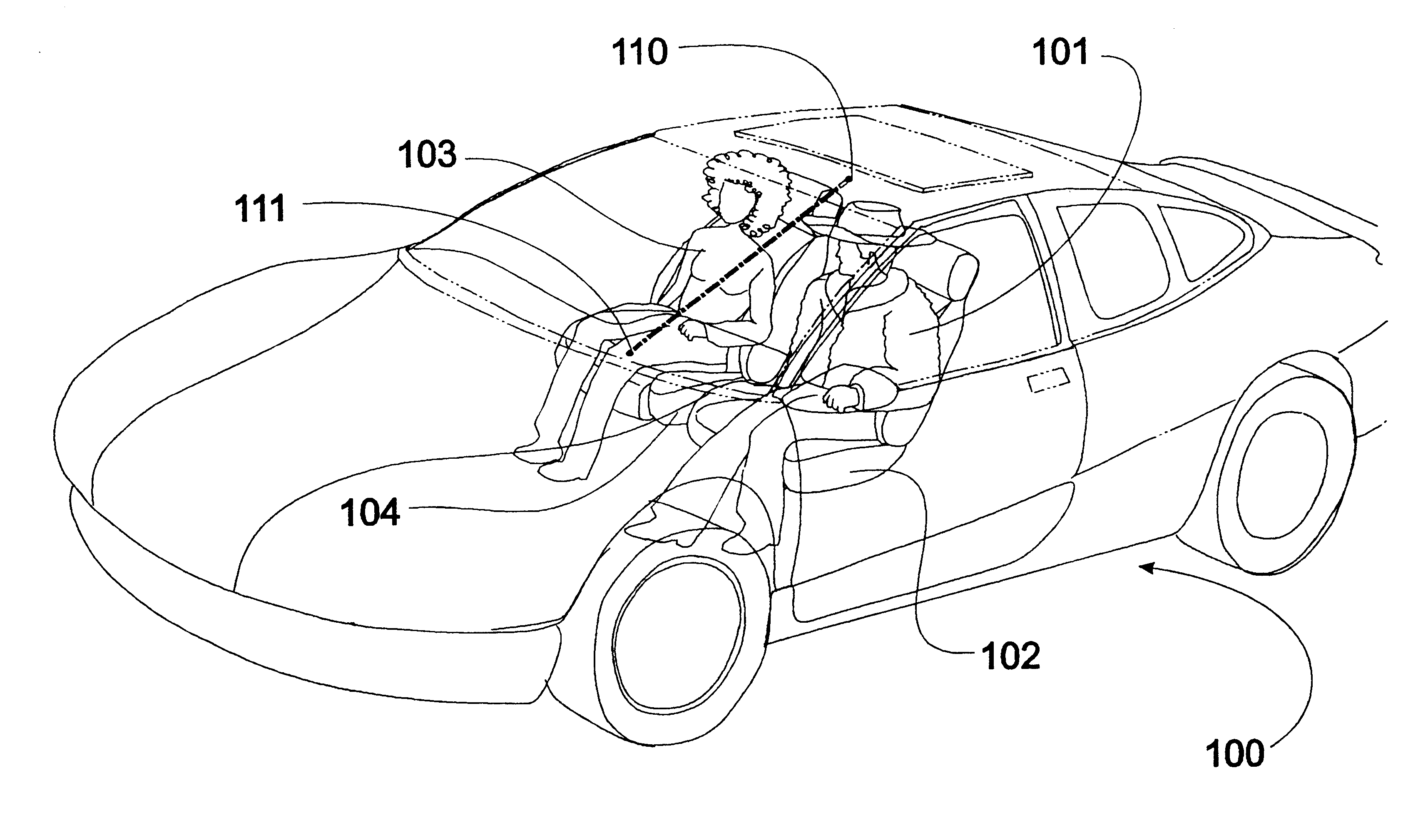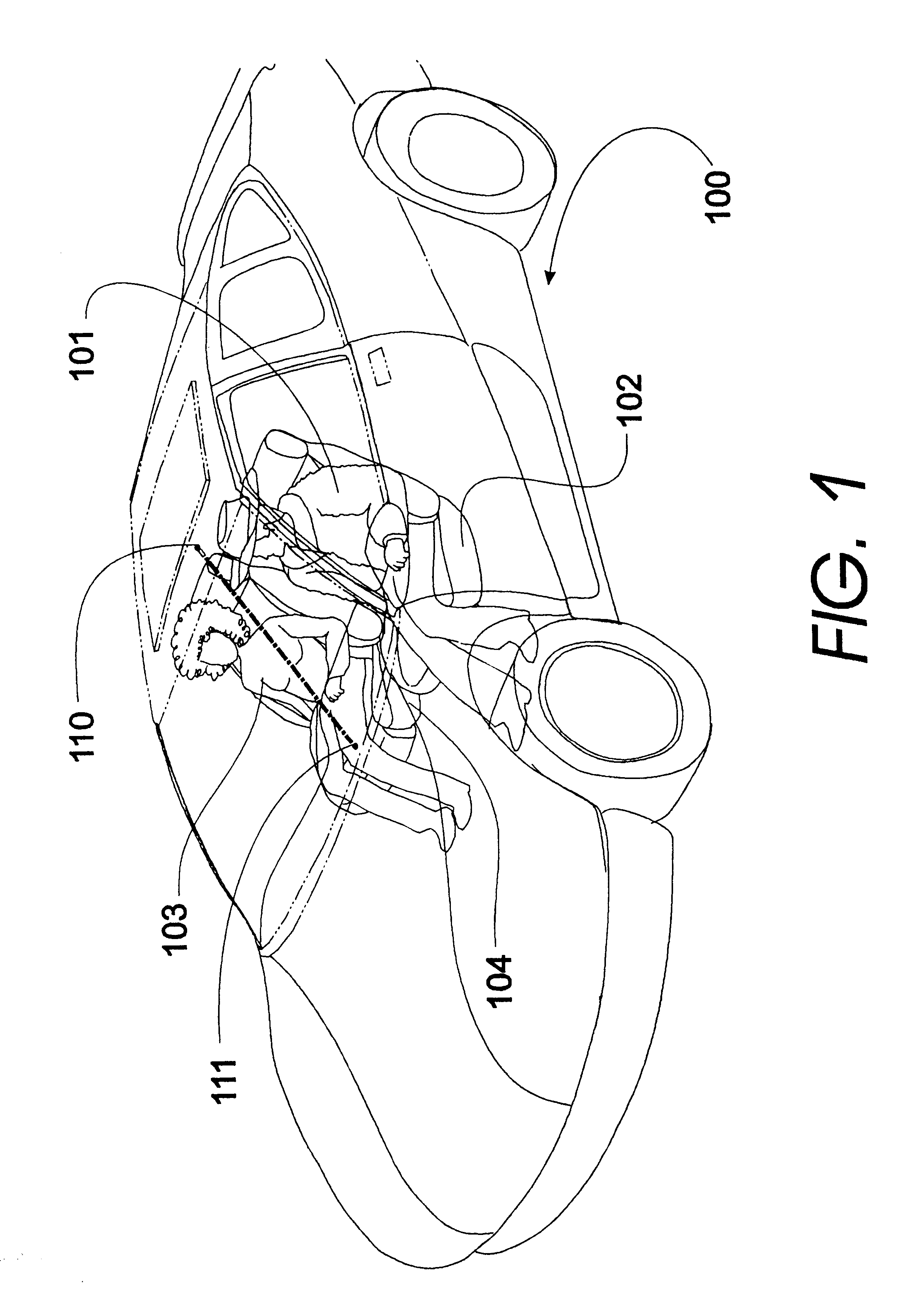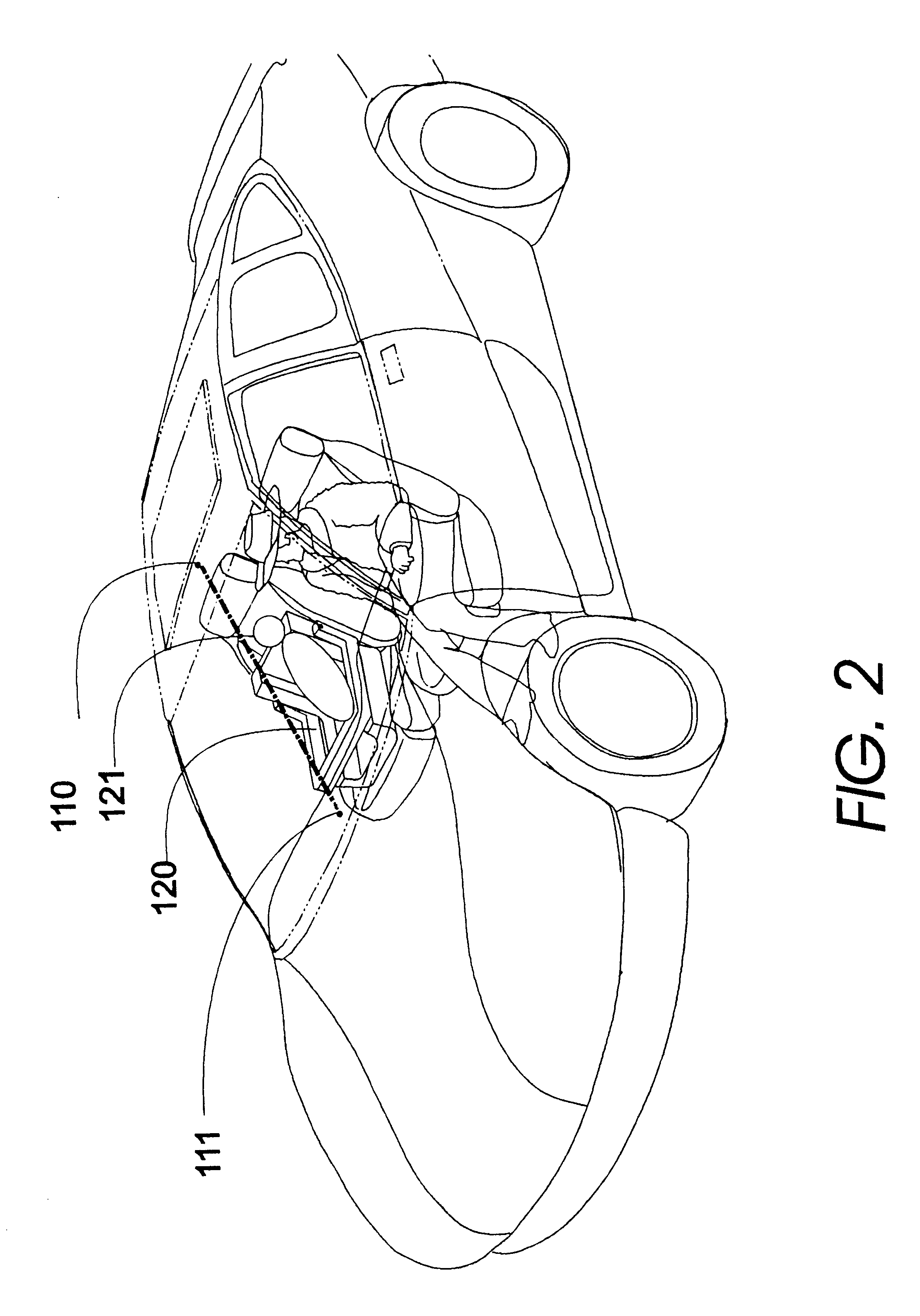Method for identifying the presence and orientation of an object in a vehicle
a technology for identifying the presence and orientation of objects in vehicles, applied in the direction of pedestrian/occupant safety arrangements, instruments, and reradiation, etc., can solve the problems of excessive cost of replacing airbags, child in rear facing child seats placed on the right front passenger seat is in danger of being seriously injured or killed, and achieves the effect of suppressing the deployment of airbags
- Summary
- Abstract
- Description
- Claims
- Application Information
AI Technical Summary
Benefits of technology
Problems solved by technology
Method used
Image
Examples
Embodiment Construction
Referring now to the drawings, where like reference numbers represent like or similar parts, a section of the passenger compartment of an automobile is shown generally as 100 in FIG. 1. A driver 101 of a vehicle sits on a seat 102 behind a steering wheel, not shown, and an adult passenger 103 sits on seat 104 on the passenger side. Two transmitter and receiver assemblies 110 and 111, also referred to herein as transducers, are positioned in the passenger compartment 100, one transducer 110 is arranged on the headliner adjacent or in proximity to the dome light and the other transducer 111 is arranged on the center of the top of the dashboard (the methodology leading to the placement of these transducers is central to the instant invention as explained in detail below). In this situation, the invention will reliably detect that an occupant is sitting on seat 104 and deployment of the airbag is enabled in the event that the vehicle experiences a crash. Transducers 110,111 are placed w...
PUM
 Login to View More
Login to View More Abstract
Description
Claims
Application Information
 Login to View More
Login to View More - R&D
- Intellectual Property
- Life Sciences
- Materials
- Tech Scout
- Unparalleled Data Quality
- Higher Quality Content
- 60% Fewer Hallucinations
Browse by: Latest US Patents, China's latest patents, Technical Efficacy Thesaurus, Application Domain, Technology Topic, Popular Technical Reports.
© 2025 PatSnap. All rights reserved.Legal|Privacy policy|Modern Slavery Act Transparency Statement|Sitemap|About US| Contact US: help@patsnap.com



